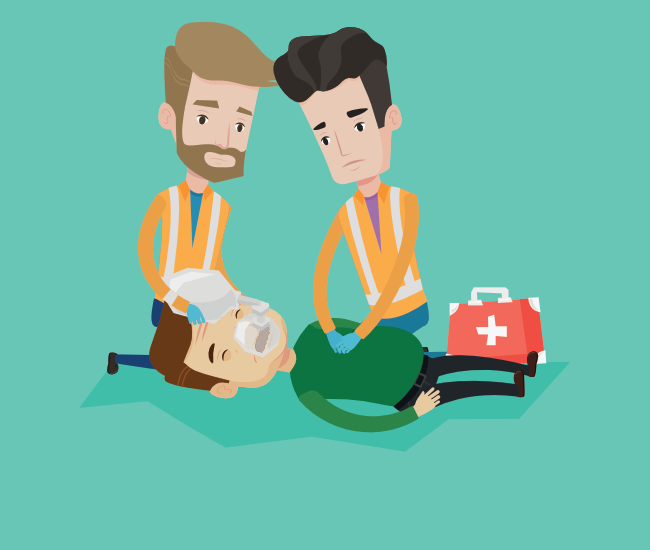Performing CPR can save a life if done properly. But what exactly does “properly” mean?
Many people rush onto the scene and attempt to perform CPR without knowing the right way to do it. If no one on the scene is qualified, someone should still attempt CPR. The success of CPR depends on many things. Correct hand placement is one of them.
CPR is not one-size-fits-all. You need to make adjustments based on the age of the person who needs help. What may be adequate pressure for one age group could be too much or too little for another.
We’re going to take a closer look at the differences in how you should place your hands when performing CPR on adults, children, and infants. Knowing these variations can mean the difference between life and death!
Why is hand placement important in CPR?
Hand placement for chest compressions during CPR is important for several reasons, each equally vital to the safety and survival of the person you are assisting. Let’s take a look.
Where to place your hands during CPR
You know that you should place your hands on a person’s chest for compressions, but where on the chest is the right place? The answer – the very center, slightly below the nipple line. This decreases the chances of breaking someone’s ribs and places the pressure on the heart to keep blood circulating.
How many hands to use during CPR
During CPR, you can use either one or two hands. As you might imagine, more pressure is applied to the chest when you use two arms than when you use one. With that in mind, both hands should be used when performing CPR on adults and bigger or older children. Their bones are typically not quite as fragile and two hands helps you achieve the deeper compressions you need on an adult. If you don’t apply enough pressure, CPR will be ineffective.
Use one hand with small or young children generally between 1 and 8 years old. Pre-teens and teenagers may need stronger pressure depending on their size in which case two hands are appropriate.
For infant CPR, only two or three fingers to perform chest compressions. You only need to aim for at least 1/3 the depth of the chest, and since infants are small and fragile, using even one hand is too much pressure and can end up breaking bones or causing organ damage. So, two or three fingers it is. Or, another recommended option is grabbing the infants chest with your thumbs in the center of the chest and your fingers reaching around to the back, then just squeeze your thumbs towards your fingers.
How do you position your hands during CPR?
In addition to using the correct number of hands and/or fingers when doing compressions, hand positioning is also important and changes slightly depending on the age of the person you’re helping.
CPR hand positioning for adults
To perform CPR on an adult, begin by placing the heel of your hand on the center of the chest. Next, place your other hand on top and interlock your fingers. Hold your arms straight with your shoulders directly over your hands. Use both your arm strength and the strength of your upper body to do effective chest compressions.
The proper ratio of compressions to rescue breaths ratio is 30:2 if you are CPR certified. If you’re not certified and you aren’t sure how to provide rescue breaths, stick to hands-only CPR.
CPR hand positioning for children
When performing CPR on children between the ages of 1 and 8, place the heel of one hand on the center of the chest. Do chest compressions in much the same way as you would with an adult but leave your other hand off of the chest. Be gentle with the younger children, monitoring how deep the compressions go carefully. Compressions should be about 1/3 the depth of the chest.
For preteens and teenagers, you can use the adult method as long as their bodies are big enough for it.
CPR hand positioning for infants
Be very cautious and controlled when positioning your hand for infant CPR. In fact, you should use only two or three fingers. Only push hard enough to compress the chest at least 1/3 the depth of the chest. Too much pressure could cause unnecessary harm. Place your fingers in the center of the chest around the nipple line, just as you would with children and adults.
How do you become CPR certified?
The best way to prepare for performing CPR on people of all ages is to get formal CPR training, whether or not your profession calls for it. Classes are not just for healthcare and childcare providers. Anyone can become CPR certified!
In the past, you had to find a local course and hope that there was an open slot in a class that fits your schedule. The good news is, thanks to modern technology, you can get certified without leaving your home if that’s how you want to do it.
ProCPR courses from ProTrainings are affordable, instructional, and professional. All material is up-to-date as per the AHA & ECC/ILCOR guidelines – you can trust that you are learning the most relevant and factual information available. You don’t pay until after you pass the course. Then, you’re issued your CPR certificate which you can print out immediately! These days, not many people are as ready for disaster as they should be. If you choose to get CPR certified, encourage your friends and family to do the same. That way, we can all rest easier knowing that we have each other’s backs.

